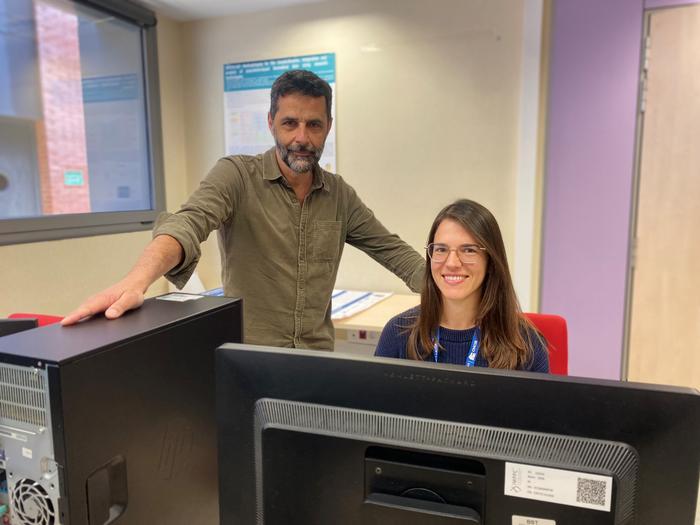A pioneering study conducted by researchers involved in the GCAT|Genomes for Life project, based at the Germans Trias i Pujol Research Institute (IGTP), has made significant strides in addressing a critical challenge facing population-based cohort studies: selection bias. Published in the prestigious journal Scientific Reports, this innovative research introduces a sophisticated statistical adjustment method aimed at mitigating the distortions introduced by “healthy volunteer bias,” a well-documented phenomenon that can skew data and undermine the translational value of cohort findings. The work undertaken by the team not only advances methodological rigor in epidemiological research but also has far-reaching implications for public health policy and precision medicine.
The GCAT cohort, comprising nearly 20,000 adult participants from Catalonia, Spain, is a comprehensive, long-term study designed to unravel the complex interplay between genetic predispositions and environmental exposures contributing to chronic diseases. Populational cohorts such as GCAT are invaluable for their potential to track disease progression and incidence trends over time. However, intrinsic to the volunteer-based recruitment model is a fundamental bias: participants tend to be healthier and possess higher socioeconomic status than the general population, an issue termed “healthy volunteer bias.” This skew threatens the external validity of studies and risks generating conclusions that do not translate well to the broader population.
Led by Natàlia Blay with the expert guidance of Dr. Rafael de Cid, scientific director of the GCAT project, the research team undertook a meticulous comparative analysis between the GCAT cohort data and a wide array of population health records and survey data from Catalonia. This comparative framework allowed the researchers to quantify the extent and nature of bias present in the cohort and to devise a statistical corrective methodology. Employing raked weighting, a nuanced form of post-stratification adjustment, the method recalibrates the cohort data according to demographic and health-related variables including age, gender, educational attainment, smoking status, and self-reported health.
Raked weighting operates by assigning differential weights to cohort participants so that the weighted distribution of key variables mirrors that of the target population. Through this technique, the researchers reported a dramatic reduction in demographic biases—up to 70%—and a notable 26% decrease in the discrepancy of disease prevalence estimates when compared to true population metrics. This significant correction enhances the cohort’s representativeness and validity, fortifying its utility as a platform for epidemiological inference and guiding precision medicine initiatives.
Beyond the statistical innovation, this study embodies a strategic integration of biomedical research with population-level surveillance and clinical practice. It is situated within the collaborative research group GRIMTra, which investigates the trajectories and impacts of chronic disease, operating under IGTP’s CORE Program for Public Health and Primary Healthcare. The integrative nature of this work exemplifies how modern cohort studies can serve as bridges, translating complex genetic and environmental data into actionable insights for healthcare planning and policy formulation.
The implications of making cohort data more representative and less biased are profound. More accurate population estimates enable researchers and policymakers to better identify at-risk groups, optimize resource allocation, and design targeted intervention strategies. Particularly in the era of precision medicine, where tailoring treatment to individual and community-level risk profiles is paramount, such methodological advancements are crucial for driving equitable health outcomes.
According to Dr. Rafael de Cid, the study not only enhances the GCAT cohort’s value as a research resource for elucidating disease mechanisms but also firmly establishes it as a "population laboratory" capable of generating evidence directly relevant for public health interventions. This dual role underscores the evolution of cohort studies from purely observational endeavors to dynamic infrastructures that inform real-world healthcare solutions.
The study’s detailed approach to data comparison was meticulous, leveraging comprehensive health records from Catalonia and a broad suite of sociodemographic indicators to inform the weighting process. The successful application of these methodologies in GCAT sets an important precedent for other large-scale, volunteer-based cohorts globally, offering a replicable blueprint for correcting biases without resorting to costly or impractical recruitment strategies.
Moreover, the emphasis on variables such as education and smoking—a proxy for lifestyle risk factors—highlights the intricate ways in which socioeconomic and behavioral facets shape health outcomes. Addressing biases related to these determinants ensures that subsequent analyses reflect the complexity of population health and avoid oversimplified interpretations drawn from non-representative samples.
The authors, none of whom declared conflicts of interest, invite wider adoption and adaptation of their raked weighting protocol. By sharing their findings transparently, the GCAT team contributes to a growing movement emphasizing the integrity of data analyses in cohort epidemiology. Their work advances the conversation on best practices in observational research, promoting methodological standards that can bolster trust in epidemiological findings among clinicians, public health officials, and the general public.
In an age where data-driven approaches dominate biomedical sciences, this study exemplifies the critical interplay between robust statistical methodology and applied health research. It vividly demonstrates that improving the quality and representativeness of cohort data is not merely an academic exercise but a fundamental prerequisite for actionable insights that can transform health outcomes on a population scale.
With cohorts worldwide increasingly leveraged for genomic and environmental health research, the GCAT project’s innovative correction method represents an essential methodological evolution. It highlights the importance of continuously refining analytical tools to match the complexity and diversity inherent in human populations, thereby maximizing the translational potential of cohort studies in the fight against chronic diseases.
As the GCAT cohort advances in age and size, applying such bias reduction techniques will become ever more crucial. This ensures that evolving datasets retain their epidemiological potency, enabling scientists to unravel disease trajectories with unprecedented precision and provide reliable evidence that shapes future public health policies and precision medicine frameworks.
Subject of Research: People
Article Title: Weighting health-related estimates in the GCAT cohort and the general population of Catalonia
News Publication Date: 16-May-2025
Web References: http://dx.doi.org/10.1038/s41598-025-01284-9
Image Credits: IGTP
Keywords: Cohort studies, Statistical analysis, Public health, Population genetics, Population biology




